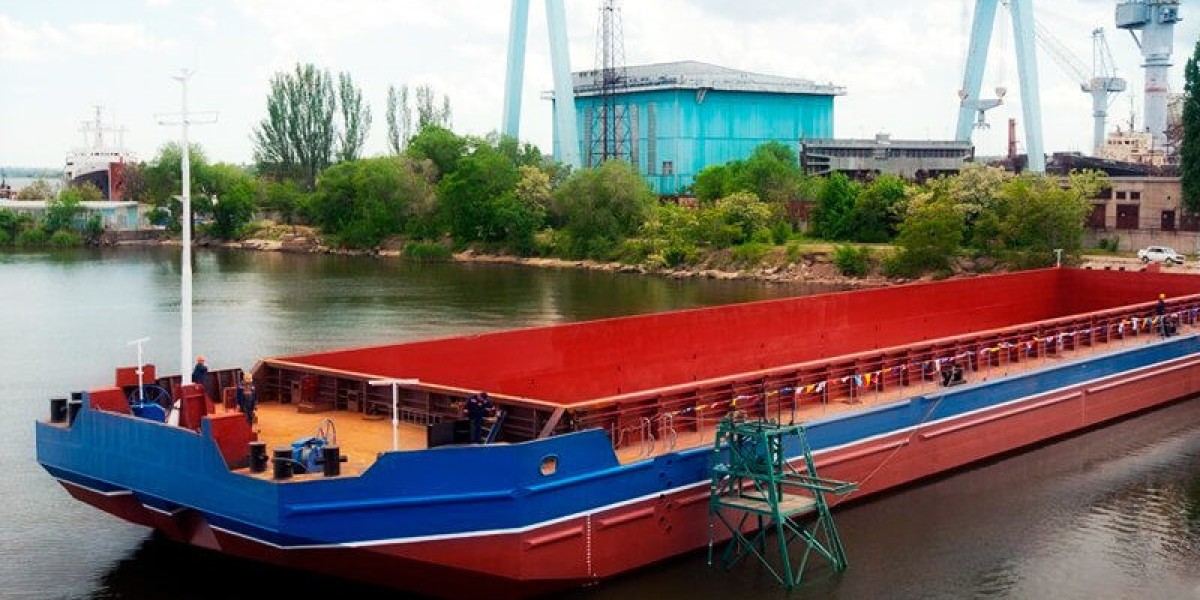Advantages
One of the major advantages of barge transportation is its cost-effectiveness. Barges offer significant savings over other modes of surface transportation like trucks and railways. On average, one gallon of fuel can transport one ton of cargo 530 miles by barge. This efficiency allows barge transportation to offer freight costs that are typically 10-15% lower than rail or truck transportation.
Another advantage is its carrying capacity. Modern barges can transport up to 1500-3000 tons of cargo in a single voyage. This large carrying capacity means fewer barges are needed to transport the same volume of cargo compared to trucks or railcars. Fewer vessels reduce energy consumption and lead to lower transportation costs.
Barge Transportation are also more environmentally friendly than trucks or trains. Since they have a lower fuel consumption per ton-mile of cargo than trucks or rail, barge transport produces fewer greenhouse gas emissions. Fewer barges and tugboats are also required, reducing air and noise pollution. Their use of fuelefficient motors helps conserve the environment.
Key Sectors Relying on Barge Transportation
Agriculture - Bulk agricultural commodities like grains, fertilizers, and lumber move huge volumes via inland waterways. Soybeans, corn, wheat and other products are cost-effectively transported from the agricultural regions in the Midwest to ports via barge transport.
Energy - More than 800 million tons of coal, petroleum, crude oil, and petroleum products are carried on US waterways each year. Many powerplants and oil refineries rely on barge deliveries for continuous operations.
Industrial Materials - Building materials, iron and steel products, gravel, sand, chemicals, and other industrial goods are extensively shipped between factories and plants located along waterways. Being bulk cargo, barges offer the best transportation rates.
International Transport - Mississippi River plays a key role in transporting US exports and imports. Many ocean-going vessels dock at coastal ports and lighter coastal and inland barges carry containers between ports and inland destinations.
Infrastructure and Maintenance Challenges
While an environment-friendly and economical mode, barge transport faces challenges related to aging infrastructure and waterway maintenance. Locks and dams systems regulating water levels require continued maintenance and periodic modernization. Outdated or insufficient infrastructure lead to delays during peak seasons.
Lack of sustained funding from government agencies impacts necessary upgrades. Dredging projects to deepen shipping channels are often delayed, limiting vessels' cargo capacities. Shallow waters pose an operational challenge, especially during drought periods. Weather-related closures disrupt supply chains.
Navigating complex infrastructure involving locks and dams require experienced crew and pilots. Labor shortages in the industry impacts reliability. Waterway congestion during high traffic periods leads to delays. Addressing these challenges through long-term modernization programs and workforce development can boost efficiency.
Emerging Technologies
New technologies are enhancing tracking, vessel design and increasing the competitiveness of barge transportation. Use of GPS devices, digital charts and vessel automation allow safer and efficient navigation. Telematics provide real-time cargo and location monitoring.
Hybrid electric and LNG fueled barges help reduce emissions. New designs allow higher capacities in existing infrastructure. Cargo containers are now transported on articulated tug barges for faster loading/unloading. Barge firms are increasingly digitizing operations for better collaboration between supply chain participants. Improving network connectivity enables monitoring of vessel fleets from operations centers.
Emerging opportunities around barge transportation finished vehicles, renewable energy components and project cargo further boosts the industry's versatile capabilities. Adoption of automation and use of alternative fuels will strengthen barge transport's eco-friendly credentials and complement infrastructure upgrades to sustain its vital role in freight mobility.
For Better Understanding, Choose preferred language-
Get More Insights on Barge Transportation
About Author-
Vaagisha brings over three years of expertise as a content editor in the market research domain. Originally a creative writer, she discovered her passion for editing, combining her flair for writing with a meticulous eye for detail. Her ability to craft and refine compelling content makes her an invaluable asset in delivering polished and engaging write-ups.
(LinkedIn: https://www.linkedin.com/in/vaagisha-singh-8080b91)










